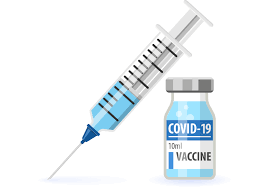 Over the past few decades, the respective roles of the Food and Drug Administration (FDA) and the Centers for Disease Control and Prevention (CDC) in making vaccine policy have been reasonably well defined. The FDA focuses on ensuring that the data submitted by vaccine manufacturers support the claims of safety and effectiveness made in the prescribing information and that the vaccines are produced using high-quality standards in appropriate facilities. The FDA is also responsible for issuing guidance on how the vaccine industry can comply with its regulations and recommendations. Its guidance documents represent formal statements of agency policy, and the process underlying them usually involves issuing a draft document, receiving comments to a docket of the Federal Register at www.regulations.gov, and publishing a final version of the guidance after incorporation of any necessary revisions based on the comments obtained. [ New England Journal of Medicine]
Over the past few decades, the respective roles of the Food and Drug Administration (FDA) and the Centers for Disease Control and Prevention (CDC) in making vaccine policy have been reasonably well defined. The FDA focuses on ensuring that the data submitted by vaccine manufacturers support the claims of safety and effectiveness made in the prescribing information and that the vaccines are produced using high-quality standards in appropriate facilities. The FDA is also responsible for issuing guidance on how the vaccine industry can comply with its regulations and recommendations. Its guidance documents represent formal statements of agency policy, and the process underlying them usually involves issuing a draft document, receiving comments to a docket of the Federal Register at www.regulations.gov, and publishing a final version of the guidance after incorporation of any necessary revisions based on the comments obtained. [ New England Journal of Medicine]
The CDC and its Advisory Committee on Immunization Practices (ACIP) subsequently review the FDA prescribing information and other available information to make recommendations that they consider to be in the best interest of public health. They also post the recommended schedules of immunizations for children and adults. Both agencies share responsibility for vaccine safety surveillance, and this overlapping coverage helps ensure that safety signals are rapidly identified and refined.
More>
